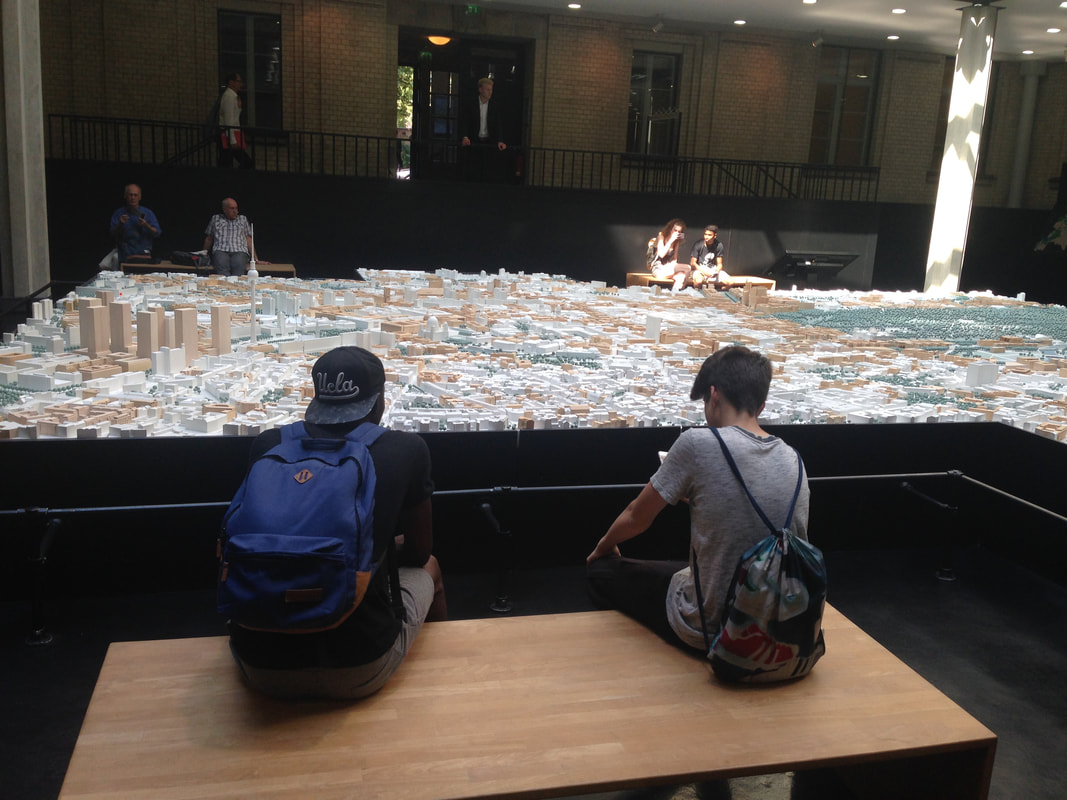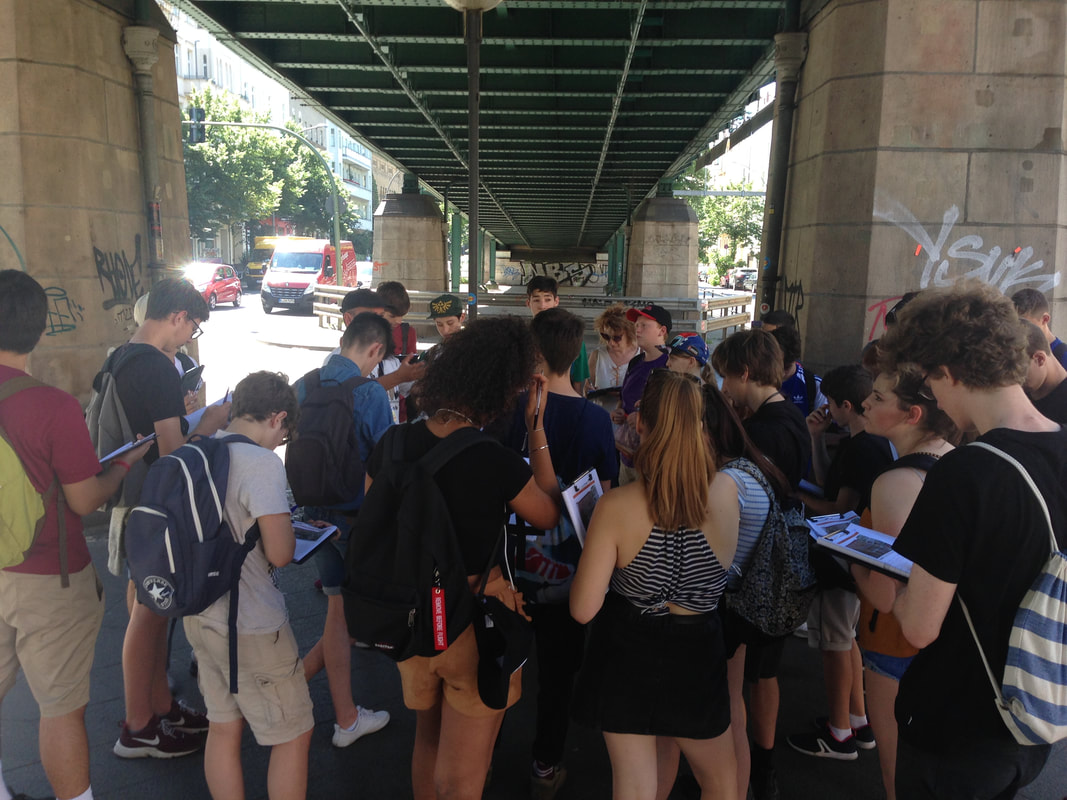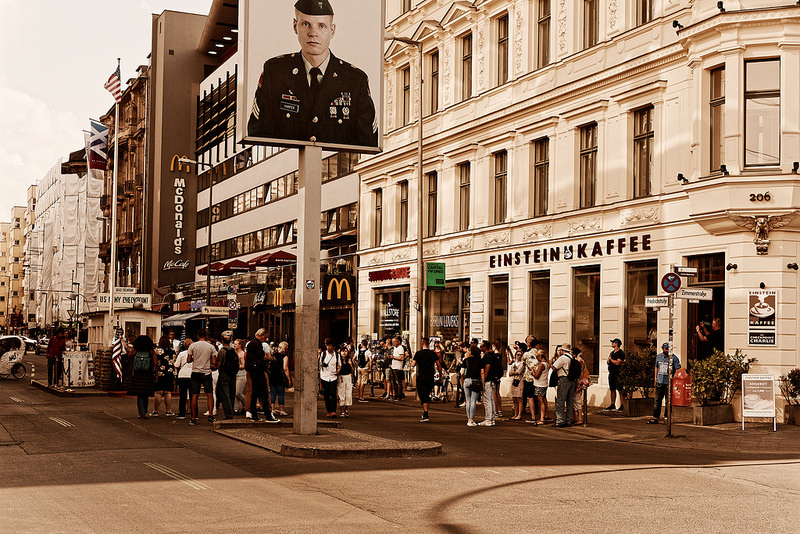Key Resources...
Criterion A - Fieldwork Question & Geographic Context... (300)

From the IB
The fieldwork question (the precise inquiry) guides the fieldwork investigation. It must be focused, appropriate and stated as a question that can be answered through the collection of primary information in the field. Where appropriate, students can make a brief preliminary judgment or prediction answering the fieldwork question. This prediction may be formulated as a hypothesis.
Students must also comment briefly on the geographic context, explaining why and where the fieldwork investigation is to be carried out. This can include relevant spatial, physical, socio‑economic conditions and other background information, concepts or characteristics. A map of the research area and/or the locations used in the fieldwork investigation is essential to provide the necessary spatial element.
Students must also state the area(s) of the syllabus to which the study relates, which geographic inquiry topic or sub-topic in the syllabus, whether it is from the optional themes, the core theme, or the HL extension. It can be drawn from a combination of two or more topics or themes.
This criterion assesses the focus and geographic context of the fieldwork and to what extent the link between the fieldwork question and the geographic context (that is, material in the syllabus, a relevant syllabus topic or geographical theory) is made clear. The fieldwork question should be specifically geographical.
Student Instructions
Step 1 - Your title for investigation is: To what extent has urban renewal led to gentrification in different areas of East Berlin?
You can formulate one or two sub research questions (see list below) to help you to investigate the title above.
Step 2 - Make a hypothesis based on the question(s) above e.g. 'regeneration has been unsuccessful in Kreuzberg'.
Step 3 - Describe the geographic theory surrounding urban renewal and how this can lead to gentrification. This will need to be linked to the history of Berlin from the end of the Second World War right up to present day. You may wish to present this information as a timeline. The DVD Berlin video by Matt Frei (IST students - On school media drive) will also provide excellent context.
Step 4 - Draw a small map of Germany to show the location of Berlin. Label surrounding countries, sea to the north and add North arrow and scale line.
Step 5 - Now draw a map of the conurbation of Berlin. Once you have done this, it would be useful to overlay the path of the Berlin Wall (pre 1989) and the Death Strip.
Step 6 - State the relationship between the IA investigation and the syllabus. You may also link in to other topics covered outside of Option G.
The fieldwork question (the precise inquiry) guides the fieldwork investigation. It must be focused, appropriate and stated as a question that can be answered through the collection of primary information in the field. Where appropriate, students can make a brief preliminary judgment or prediction answering the fieldwork question. This prediction may be formulated as a hypothesis.
Students must also comment briefly on the geographic context, explaining why and where the fieldwork investigation is to be carried out. This can include relevant spatial, physical, socio‑economic conditions and other background information, concepts or characteristics. A map of the research area and/or the locations used in the fieldwork investigation is essential to provide the necessary spatial element.
Students must also state the area(s) of the syllabus to which the study relates, which geographic inquiry topic or sub-topic in the syllabus, whether it is from the optional themes, the core theme, or the HL extension. It can be drawn from a combination of two or more topics or themes.
This criterion assesses the focus and geographic context of the fieldwork and to what extent the link between the fieldwork question and the geographic context (that is, material in the syllabus, a relevant syllabus topic or geographical theory) is made clear. The fieldwork question should be specifically geographical.
Student Instructions
Step 1 - Your title for investigation is: To what extent has urban renewal led to gentrification in different areas of East Berlin?
You can formulate one or two sub research questions (see list below) to help you to investigate the title above.
Step 2 - Make a hypothesis based on the question(s) above e.g. 'regeneration has been unsuccessful in Kreuzberg'.
Step 3 - Describe the geographic theory surrounding urban renewal and how this can lead to gentrification. This will need to be linked to the history of Berlin from the end of the Second World War right up to present day. You may wish to present this information as a timeline. The DVD Berlin video by Matt Frei (IST students - On school media drive) will also provide excellent context.
Step 4 - Draw a small map of Germany to show the location of Berlin. Label surrounding countries, sea to the north and add North arrow and scale line.
Step 5 - Now draw a map of the conurbation of Berlin. Once you have done this, it would be useful to overlay the path of the Berlin Wall (pre 1989) and the Death Strip.
Step 6 - State the relationship between the IA investigation and the syllabus. You may also link in to other topics covered outside of Option G.
|
Possible sub research questions to investigate: 1. How have the Authorities attempted to regenerate Eastern Berlin? 2. How successful has the regeneration of Eastern Berlin been? 3. What methods have urban planners used to regenerate Eastern Berlin? 4. To what extent is X a disadvantaged area of Berlin? 5. To what extent does the redevelopment of East Berlin cater for the needs of key stakeholders? 6. Has/have X location(s) on study area been gentrified? Source: Thanks to Barcelona Field Studies Centre for inspiration! |
Criterion B: Methods of investigation... (300)
|
From the IB
Students must describe the method(s) used to collect information. The description may include technologies employed, sampling techniques, time, location and circumstances of information collection where relevant. The method(s) used must be justified and must enable a sufficient quality and quantity of primary data to be produced to allow the fieldwork question to be investigated. This criterion assesses the description, justification and appropriateness of the method or methods including sampling and surveying techniques, primary or secondary data collection as appropriate used to investigate the question formulated. Student Instructions Step 1 - Describe how you collected: a) secondary data such as background video tasks and our tour guide and resident of Berlin for 10 years, John. b) primary data - your surveys in your booklet. Try to include photos of you in the field carrying out the surveys if possible. You collected this data in six contrasting areas of Berlin. For each survey in your booklet, you should include: a) a copy of the recording table and a brief explanation of why the scores differ. b) underneath each image, justify the relevance of the method to your research question / hypotheses c) explain what high / low scores in each survey might suggest. Try not to do this in table format. The IB don't like this approach very much! Step 2 - Show where you collected your data. A copy of Mr Podbury's Google Map would be suitable here. Annotate the chosen 4 / 5 locations of your chosen study areas onto the map to clearly identify the study area. |
Criterion C: Quality and treatment of information collected ... (0)

From the IB
Students should treat and display the information collected using the most appropriate techniques. These techniques must be the most effective way of representing the type of information collected and must be well used.
The precise techniques employed will differ depending on the nature of the fieldwork question but may include statistical tests (including confidence limits), graphs, diagrams, maps, annotated photographs and images, matrices and field sketches.
Students must also refer to the geographic context, information collected and the ways in which the material has been treated and presented. This criterion assesses the quality of information and data collected and its suitability for analysis in criterion D, whether it is appropriate and a sufficient range of techniques have been used for the presentation of information, and whether the presentation follows accepted conventions (that is, the numbering, labelling, and annotating of tables, graphs and diagrams).
IB Student Instructions
This section may not have any word count and should be embedded together with Criterion D together as one chapter. The total word count for both Criterion C & D is 1350 words.
Step 1 - PHOTOS
Sort through your photos. Find the photos of the study areas that you are going to use later. Create four folders in your My Documents that have the same name as the study areas e.g. Courtyard 1 etc.
Create a photo evidence board. To do this, mix the photos you have taken with either a Google Map or perhaps this map of the extent of gentrification in Berlin. The final product would have to be printed in A3 size to make sure that it was clear.
Step 2 - NOTES
Write up your notes using this template. Once you have chosen the four areas you would like to study, go back through your notes from John and write them up in the spaces provided. You can delete the study areas that you are not using.
Step 3 - PROCESS YOUR DATA IN EXCEL / HAND DRAWN MAPS
Perception Survey - One Chart
* Bar Chart or Radar Chart to either show Positive or Negative qualities of each of the zones.
* If your zone has positive and negative results, enter the negative scores as -1, -2 & -3 and Excel will plot them together on the same chart with the positive bars going upwards and the negative bars going downwards.
Then match up the photos that show your results!
Index of Services & Amenities - Two charts.
* One bar graph showing the total number of services & amenities for each zone
* One table showing the three ranges (1, 2 & 3) and which zone each range falls in.
**Remember Range 1 (services used by traditional resident), Range 2 (services used by trad residents & tourists) Range 3 (services used mostly by tourists or luxury items)
Then match up the photos that show your results!
Residential Decay Index - Three or four charts (depends on number of zones).
* One radar chart showing one of the factors (e.g. structural damage) for each of your zones.
* Then do this for another two factors (part peeling & deterioration of walls)
Then match up the photos that show your results!
Conflict Matrix - One graph
* Bar or line graph to show the total number of conflicts in each or your chosen zones.
Then match up the photos that show your results!
Further ideas for presentation can be seen on this excellent page from inthinking.
Students should treat and display the information collected using the most appropriate techniques. These techniques must be the most effective way of representing the type of information collected and must be well used.
The precise techniques employed will differ depending on the nature of the fieldwork question but may include statistical tests (including confidence limits), graphs, diagrams, maps, annotated photographs and images, matrices and field sketches.
Students must also refer to the geographic context, information collected and the ways in which the material has been treated and presented. This criterion assesses the quality of information and data collected and its suitability for analysis in criterion D, whether it is appropriate and a sufficient range of techniques have been used for the presentation of information, and whether the presentation follows accepted conventions (that is, the numbering, labelling, and annotating of tables, graphs and diagrams).
IB Student Instructions
This section may not have any word count and should be embedded together with Criterion D together as one chapter. The total word count for both Criterion C & D is 1350 words.
Step 1 - PHOTOS
Sort through your photos. Find the photos of the study areas that you are going to use later. Create four folders in your My Documents that have the same name as the study areas e.g. Courtyard 1 etc.
Create a photo evidence board. To do this, mix the photos you have taken with either a Google Map or perhaps this map of the extent of gentrification in Berlin. The final product would have to be printed in A3 size to make sure that it was clear.
Step 2 - NOTES
Write up your notes using this template. Once you have chosen the four areas you would like to study, go back through your notes from John and write them up in the spaces provided. You can delete the study areas that you are not using.
Step 3 - PROCESS YOUR DATA IN EXCEL / HAND DRAWN MAPS
Perception Survey - One Chart
* Bar Chart or Radar Chart to either show Positive or Negative qualities of each of the zones.
* If your zone has positive and negative results, enter the negative scores as -1, -2 & -3 and Excel will plot them together on the same chart with the positive bars going upwards and the negative bars going downwards.
Then match up the photos that show your results!
Index of Services & Amenities - Two charts.
* One bar graph showing the total number of services & amenities for each zone
* One table showing the three ranges (1, 2 & 3) and which zone each range falls in.
**Remember Range 1 (services used by traditional resident), Range 2 (services used by trad residents & tourists) Range 3 (services used mostly by tourists or luxury items)
Then match up the photos that show your results!
Residential Decay Index - Three or four charts (depends on number of zones).
* One radar chart showing one of the factors (e.g. structural damage) for each of your zones.
* Then do this for another two factors (part peeling & deterioration of walls)
Then match up the photos that show your results!
Conflict Matrix - One graph
* Bar or line graph to show the total number of conflicts in each or your chosen zones.
Then match up the photos that show your results!
Further ideas for presentation can be seen on this excellent page from inthinking.
Criterion D: Written analysis... (1350)
|
From the IB
In the written analysis, students must demonstrate their knowledge and understanding of the fieldwork investigation by interpreting and explaining the information they have collected in relation to the fieldwork question. This includes recognizing any trends and spatial patterns found in the information collected. Where appropriate, an attempt should be made to identify and explain any anomalies. The treatment and display of material and the written analysis must be integrated within this section. This criterion assesses the quality of the analysis of the results, referring to: • links to the question and hypotheses formulated • geographic context (that is, geographical theory, the syllabus, or the relevant syllabus topic) • information collected • statistics used (descriptive techniques—that is, graphs, charts, histograms and so on; as well as statistical techniques—that is, correlations, regression, and so on) • illustrative material. Student Instructions: You will need to focus on answering your research question. For the question, you will have formulated one or two hypotheses to test against it. In this section, you will be mixing your graphs, charts, statistic analysis and photos with you interpretation in one big chapter. It is important that you build a structured argument based on the fieldwork question (To what extent has urban renewal led to gentrification in different areas of East Berlin?) Step 1 - To what extent has there been Urban Renewal? You need to interpret your data and make clear whether renewal has happened or not in each of your study zones. What is the evidence? Which charts and photos will you use? What are the trends? What are the important relationships? Are there any anomalies? Any analysis could also link to any background theory that you have studied before going to Berlin. Step 2 - So, is there evidence of gentrification in each of your zones? You need to interpret your data and make clear whether gentrification has happened or not in each of your study zones. What is the evidence? Which charts and photos will you use? What are the trends? What are the important relationships? Are there any anomalies? Step 3 - To what extent does urban renewal always lead to gentrification? Did you see evidence of gentrification as a result of the renewal? What were the biggest signs? Was the gentrification caused primarily by tourists or young professionals ... or both? Does urban renewal always cause gentrification in all of your study locations? Are there any anomalies? |
Criteria E - Conclusion (200)

From the IB
Students should summarize the findings of the fieldwork investigation. There should be a clear, concise statement answering the fieldwork question. It is acceptable for the conclusion to state that the findings do not match the student’s preliminary judgment or prediction. This criterion assesses the ability of the student to summarize the findings of the fieldwork investigation and draw a supported conclusion.
Step 1 - Revisit both of your Research Questions (RQ's) and answer them concisely.
Step 2 - Revisit both of your hypotheses and briefly say whether they have been proved or disproved and why.
Step 3 - Finish with a comment based around the overall investigation title:
To what extent has urban renewal led to gentrification in different areas of East Berlin?
Focus on the word 'extent' and gentrification. What might the future bring for Berlin and for your study zones?
IST students. Please wait until you have had your first draft. Further instructions will be posted here when we get to that stage.
Students should summarize the findings of the fieldwork investigation. There should be a clear, concise statement answering the fieldwork question. It is acceptable for the conclusion to state that the findings do not match the student’s preliminary judgment or prediction. This criterion assesses the ability of the student to summarize the findings of the fieldwork investigation and draw a supported conclusion.
Step 1 - Revisit both of your Research Questions (RQ's) and answer them concisely.
Step 2 - Revisit both of your hypotheses and briefly say whether they have been proved or disproved and why.
Step 3 - Finish with a comment based around the overall investigation title:
To what extent has urban renewal led to gentrification in different areas of East Berlin?
Focus on the word 'extent' and gentrification. What might the future bring for Berlin and for your study zones?
IST students. Please wait until you have had your first draft. Further instructions will be posted here when we get to that stage.
Criteria F - Evaluation (300)

From the IB
Students should review their investigative methodology, including methods of collecting primary information.
Within this, they should consider any factors that may have affected the validity of the data, including personal bias and unpredicted external circumstances such as the time of day visited etc. Students should suggest specific and plausible ways in which the study might have been improved and could be extended in the future. This criterion assesses the student’s ability to review the investigative methodology, by weighing up the strengths and/or weaknesses of the chosen method, and suggest improvements.
Step 1 - Revisit all the methods that you used. If you didn't use a particular methodology, do not evaluate it and take it out of your methodology too.
For each survey, you will need to describe:
* the strengths of the method
* the weaknesses of the method
* a potential improvement to the method and an explanation of the potential impacts of these improvements on future study.
Think about:
1. Perception - Based on your opinion only and someone who is not from Berlin. (safe, dangerous, improving, declining - emotive and based on your experiences of cities).
2. Services & amenities - did you record them all? Closed shops?
3. Residential Decay Index - Perception based again so what weaknesses (see point 1 above)?
4. Conflict Matrix - Again, from two sources. One was John and the second was any photos that showed conflict. Improve by consulting all key stakeholders.
Other factors to think about.
* Locations - we visited in the day time on a Tuesday afternoon in May. Issues?
* We collected data in small groups. Bias?
* Study areas were predetermined. Were they suitable? Do they represent an accurate snap shot of life in Eastern Berlin?
* We didn't speak to anybody other than John. Interviews weren't possible because of language barriers.
* Your choice of data presentation techniques (limitations, future improvements).
**** Which ever suggestions for improvement are outlined, you must make sure that the potential impact of these improvements is then explained - you can only score 3/3 if you follow this structure. See mark scheme P9. *****
Do not put the methodology in table format. The IB examiners hate that!!
Students should review their investigative methodology, including methods of collecting primary information.
Within this, they should consider any factors that may have affected the validity of the data, including personal bias and unpredicted external circumstances such as the time of day visited etc. Students should suggest specific and plausible ways in which the study might have been improved and could be extended in the future. This criterion assesses the student’s ability to review the investigative methodology, by weighing up the strengths and/or weaknesses of the chosen method, and suggest improvements.
Step 1 - Revisit all the methods that you used. If you didn't use a particular methodology, do not evaluate it and take it out of your methodology too.
For each survey, you will need to describe:
* the strengths of the method
* the weaknesses of the method
* a potential improvement to the method and an explanation of the potential impacts of these improvements on future study.
Think about:
1. Perception - Based on your opinion only and someone who is not from Berlin. (safe, dangerous, improving, declining - emotive and based on your experiences of cities).
2. Services & amenities - did you record them all? Closed shops?
3. Residential Decay Index - Perception based again so what weaknesses (see point 1 above)?
4. Conflict Matrix - Again, from two sources. One was John and the second was any photos that showed conflict. Improve by consulting all key stakeholders.
Other factors to think about.
* Locations - we visited in the day time on a Tuesday afternoon in May. Issues?
* We collected data in small groups. Bias?
* Study areas were predetermined. Were they suitable? Do they represent an accurate snap shot of life in Eastern Berlin?
* We didn't speak to anybody other than John. Interviews weren't possible because of language barriers.
* Your choice of data presentation techniques (limitations, future improvements).
**** Which ever suggestions for improvement are outlined, you must make sure that the potential impact of these improvements is then explained - you can only score 3/3 if you follow this structure. See mark scheme P9. *****
Do not put the methodology in table format. The IB examiners hate that!!












